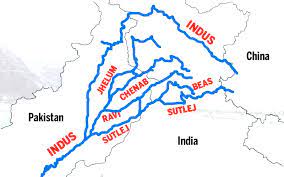Indus Water Treaty : Update

India completely stops Ravi River water flow to Pakistan.
- The completion of the Shahpur Kandi barrage diverts water from the Ravi River to benefit Jammu and Kashmir.
- This project, under the Indus Waters Treaty, aids irrigation and hydropower generation, contributing to agricultural and economic growth in the region.
INDUS WATER TREATY:
- The Indus Water Treaty is a water-sharing agreement between India and Pakistan, brokered by the World Bank and signed in 1960.
- The treaty was signed by then Indian Prime Minister Jawaharlal Nehru and Pakistani President Ayub Khan.
- The treaty deals with the river Indus and its five tributaries, classified into two categories:
- Eastern rivers: Ravi, Beas, Sutlej
- Western rivers: Indus, Chenab, Jhelum
- India got control over the eastern rivers, while Pakistan got control over the western rivers.
- The treaty allows India to use the western river waters for limited irrigation use and unlimited non-consumptive use.
- A Permanent Indus Commission was set up by the United Nations for resolving any disputes that may arise in water sharing.
- India has undertaken several water management projects, including the construction of storage facilities such as the Bhakra Dam on the Sutlej, Pong and Pandoh Dam on the Beas, and Thein (Ranjit Sagar) on the Ravi.
- These initiatives, coupled with projects like the Beas-Sutlej link and the Indira Gandhi Nahar Project, have enabled India to utilize nearly its entire share (95%) of waters from the eastern rivers.




